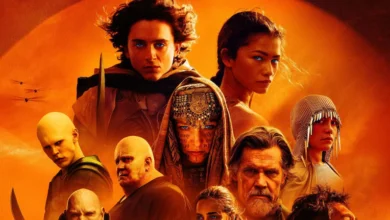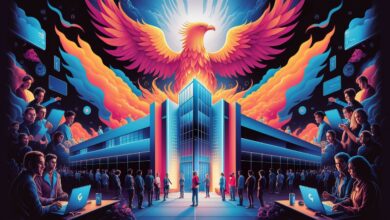The Multidimensional World of Brahman: Philosophy Identity and Modern Expressions

The term “Brahman bio” might initially seem like a niche phrase, but it opens a profound gateway into Hindu philosophy, social identity, cultural expression, and contemporary digital practices. This comprehensive exploration examines Brahman as metaphysical reality, Brahma as creator deity, Brahmin as social identity, and the modern manifestations of Brahminical heritage in bios and beyond, revealing a concept that spans from the cosmic to the personal.
Understanding Brahman: The Ultimate Reality
Brahman (ब्रह्मन्) represents the highest universal principle and ultimate reality in Hindu philosophy, transcending all duality, limitation, and conventional description. Unlike personal deities, Brahman is an impersonal, gender-neutral concept signifying the eternal, infinite ground of existence from which time, space, and cosmic law emerge. The Taittiriya Samhita (VII.3.1.4) poetically captures its boundlessness: “The Ṛcs are limited… But of the Word Brahman, there is no end” 1.
Characterized as Sat-cit-ānanda (truth-consciousness-bliss), Brahman constitutes the unchanging substratum of the universe while being immanent within it. This paradoxical nature—transcendent yet immanent—makes Brahman accessible through spiritual practice yet indefinable through ordinary language. The Upanishads explore Brahman through various lenses: as the efficient cause of creation, the pervasive consciousness in all beings, and the liberating knowledge that leads to moksha (spiritual freedom). Philosophically, schools diverge on Brahman’s relationship with the individual self (Atman): Advaita Vedanta posits their non-dual identity (“Tat Tvam Asi” – Thou art That), while Dvaita Vedanta maintains a fundamental distinction between the divine and human souls 1.
Table: Key Philosophical Perspectives on Brahman
| School | Nature of Brahman | Brahman-Atman Relationship | Primary Texts |
| Advaita Vedanta | Impersonal, Nirguna (without attributes) | Non-dual (Identity) | Upanishads, Brahma Sutras |
| Vishishtadvaita | Personal, Saguna (with attributes) | Qualified Non-dualism | Bhagavad Gita, Divya Prabandham |
| Dvaita Vedanta | Personal (as Vishnu) | Dualistic | Mahabharata, Puranas |
| Bhedabheda | Both personal and impersonal | Difference and Non-difference | Upanishads |
Brahma: The Creator Deity in Hindu Cosmology
Often confused with Brahman due to phonetic similarity, Brahma (ब्रह्मा) is a distinct, personified creator god within the Trimurti alongside Vishnu (preserver) and Shiva (destroyer). Born from a golden cosmic egg (Hiranyagarbha) or emerging from Vishnu’s navel lotus, Brahma creates all life forms—devas, asuras, humans, and other beings—within his assigned brahmand (universe) 28.
Iconographically, Brahma has four faces (Chaturmukha), representing the four Vedas, four directions, and omniscence, and four arms holding symbolic objects: a sacred text (Vedas), rosary (japamala), water pot (kamandalu), and lotus (padma). His mount, the swan (hamsa), symbolizes discernment—able to separate milk from water, representing wisdom in distinguishing truth from illusion. Despite his cosmic role, Brahma’s worship declined significantly after the 5th century CE, with few temples dedicated solely to him today. Myths explain this through stories like his curse by Shiva for inappropriate desire toward his daughter Saraswati, limiting his influence 28.
Brahma’s lifespan, calculated in divine years (divya varsh), spans 100 Brahma years, where one day equals 1,000 chaturyugas (each chaturyuga cycles through four yugas: Satya, Treta, Dwapara, and Kali). This totals 72 million chaturyugas, reflecting the vast cyclical time scales in Hindu cosmology 8.
Brahmin Identity: Varna, Dharma, and Social Expression
Brahmins (ब्राह्मण) represent the priestly and scholarly varna in Hindu society, traditionally responsible for preserving sacred knowledge, performing rituals, and upholding dharma (moral order). This identity is defined by both birth (jati) and conduct (karma), emphasizing virtues like purity (shuddhi), learning (vidya), discipline (sanskar), and ethical living. Historically, Brahmins served as teachers (gurus), ritual specialists (purohits), and advisors to kings, with subgroups like Kanyakubja, Saraswat, and Tamil Iyers developing regional traditions 13.
The Brahmanical bio in contemporary contexts—especially marriage biodatas—reflects this heritage through structured formats including:
- Gotra and Pravara: Lineage tracing to Vedic sages (rishis)
- Vedic Education: Proficiency in scriptures, mantras, and rituals
- Astrological Details: Nakshatra (birth star), Rashi (zodiac), and Kundali compatibility
- Sanskara Documentation: Record of life-cycle rituals like Upanayana (sacred thread ceremony) 7
Modern Brahmin identity balances tradition with adaptation, as seen in figures like Chandar Bhan Brahman, a 17th-century Mughal courtier who mastered Persian while maintaining his Hindu practices. His writings reveal a pluralistic identity, serving Muslim emperors without compromising his Brahminical roots—exemplifying how the community navigated cultural synthesis 6.
Digital Dharma: Instagram Bios as Identity Manifestos
The “Brahman bio” phenomenon thrives digitally through curated Instagram profiles where Brahmin youth express pride, humor, and spiritual values. These bios creatively synthesize ancient heritage with modern self-presentation:
- Traditional Sanskrit Bios:
“धर्मस्य पथे सदैव अग्रगण्यः”
(“Always foremost on the path of dharma”) 3
“विद्या ददाति विनयं, विनयाद् याति पात्रताम्”
(“Knowledge grants humility; from humility comes worthiness”) - Attitude-Driven Declarations:
“Born Brahmin by chance, living Brahmin by choice”
“My silence speaks Vedas, my gaze reflects Upanishads” 3 - Humorous Modern Twists:
“My gotra is so ancient even carbon dating gave up”
“Brahmins invented zero; I perfected doing nothing” 3
These snippets function as cultural micro-manifestos, asserting continuity amid globalization. They reference Vedas, yagnopavit (sacred thread), and gotras while employing meme culture, illustrating identity negotiation in the digital age.
Historical and Contemporary Challenges
Brahmanical traditions face scrutiny over caste-based discrimination, ritual exclusivity, and historical power dynamics. Reform movements like the Bhakti movement (medieval period) and 19th-century socio-religious reforms challenged Brahmin hegemony, advocating egalitarian spirituality. Contemporary debates also question scriptural authority, as seen in critiques like A True History of Lord Brahma which disputes Brahma’s role as creator, asserting:
“No, Lord Brahma is not the creator of the world. The creator is Param Akshar Purush… Evidence from Vedas proves Vedas emerged from churning the ocean, not Brahma” 8.
Despite controversies, adaptive resilience marks Brahmin communities. Modern professionals maintain ritual practices (sandhyavandanam, festival observances) while excelling in secular fields. Marriage biodatas now include tech careers and hobbies alongside gotra details, reflecting synthesis rather than surrender of heritage 7.
Conclusion: The Eternal and the Evolving
Brahman—as concept, deity, and community—embodies Hinduism’s capacity to encompass transcendent truth and lived identity. From the Upanishads‘ formless Absolute to Instagram’s witty Brahmin bios, this tradition continually renegotiates its expressions without severing its roots. Brahman remains the “unchanging reality amidst the changing world” 1, while its human manifestations dynamically evolve, ensuring relevance across millennia.
Frequently Asked Questions (FAQs)
Q1: What is the difference between Brahman, Brahma, and Brahmin?
A: Brahman is the ultimate, formless reality (neut./impersonal). Brahma is the creator deity (masc./personal). Brahmin denotes the priestly varna or caste group 12.
Q2: Why are there few temples dedicated to Brahma?
A: Myths describe curses limiting Brahma’s worship (e.g., by Shiva for hubris). By the 7th century CE, devotional focus shifted to Vishnu/Shiva 28.
Q3: How do modern Brahmins express identity online?
A: Through Sanskrit quotes, pride in Vedic heritage, humor about traditions (“My agnihotra is burning midnight oil for memes”), and marriage biodatas with gotra/nakshatra details 37.
Q4: Is Brahman worshiped directly?
A: Philosophically, Brahman is realized via jnana (knowledge) or bhakti (devotion to deities as Brahman’s forms). Ritually, deities like Vishnu/Shiva serve as saguna (with attributes) manifestations 1.
Q5: Do all Hindus accept Brahman as ultimate reality?
A: Most schools do, but interpretations vary. Advaita sees deities as provisional; Dvaita worships Vishnu as supreme Brahman; Shaktism focuses on the Goddess as ultimate 18.



